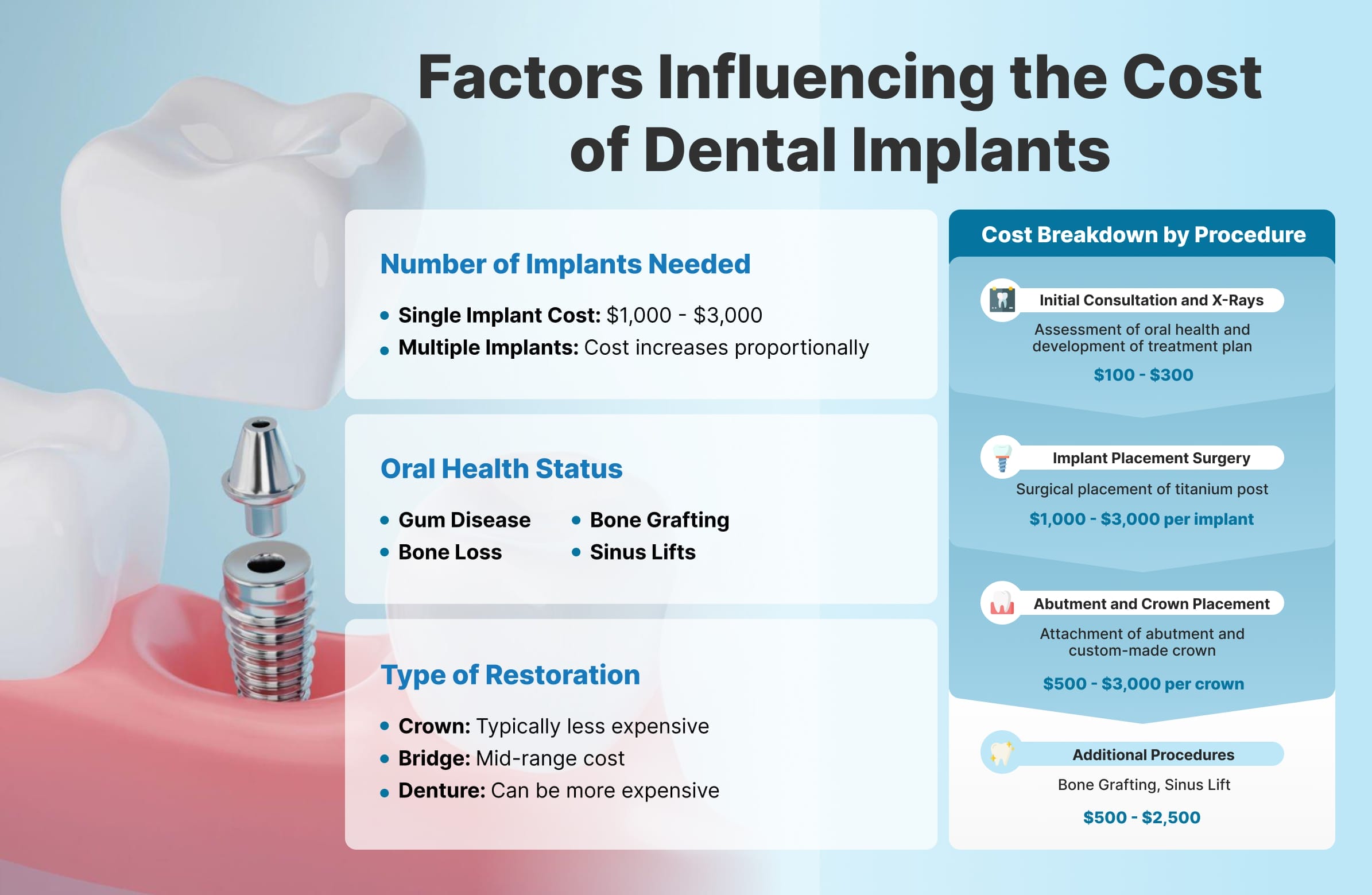The Best Strategy To Use For Dental Sense
Table of ContentsThe Best Strategy To Use For Dental Sense5 Simple Techniques For Dental SenseThings about Dental SenseAll About Dental Sense
are medical tools operatively dental implanted into the jaw to bring back a person's capacity to eat or their look. They supply support for man-made (fake) teeth, such as crowns, bridges, or dentures. When a tooth is shed because of injury or illness, a person can experience problems such as fast bone loss, malfunctioning speech, or changes to eating patterns that lead to pain.Dental implant systems contain an oral implant body and dental implant joint and might additionally consist of an abutment fixation screw. Professional teeth whitening. The dental implant body is surgically put in the jawbone in location of the tooth's origin. The oral implant joint is generally connected to the implant body by the joint fixation screw and expands through gums right into the mouth to support the connected synthetic teeth
(https://slides.com/dentalsense1)Framework of The Dental Implant System selecting dental implants, talk with your dental company concerning the prospective benefits and dangers, and whether you are a candidate for the procedure. Points to think about: Your overall health is a crucial element in identifying whether you are a good prospect for oral implants, exactly how long it will certainly require to recover, and the length of time the dental implant might remain in location.
Smoking cigarettes might affect the healing procedure and reduce the lasting success of the dental implant. The recovery process for the implant body might take several months or longer, throughout which time you usually have a short-lived abutment in area of the tooth. the oral implant procedure: Meticulously follow the oral health instructions provided to you by your dental supplier.
The Single Strategy To Use For Dental Sense
Implant failing can result in the need for another surgical procedure to repair or change the dental implant system. Recovers the capability to eat Brings back aesthetic look Assists maintain the jawbone from reducing due to bone loss Maintains the health of the surrounding bone and gum tissues Aids maintain nearby (nearby) teeth secure Enhances top quality of life Damages to bordering all-natural teeth throughout dental implant positioning Injury to the surrounding tissues throughout surgery, such as sinus opening Injury during surgery (as an example, crack of bordering jawbone) Insufficient function, such as seeming like the teeth do not bite with each other usually An experience that the tooth hangs or turning in position arising from a joint screw loosening up Implant body failure (looseness of the dental implant body) due to systemic infection, which may be most likely in clients with unchecked diabetes as a result of local infection in bone and gums sustaining the dental implant body as a result of postponed recovery, which may be most likely in individuals who smoke Trouble cleaning up the gum tissues around the dental implant, leading to bad dental health Untreated gum illness Post-surgical numbness as a result of nerve impingement or damage Always notify healthcare companies and imaging professionals that you have oral implants prior to any kind of magnetic vibration imaging (MRI) or x-ray procedures.
FDA is not conscious of any kind of adverse occasions reported for MRI or x-ray procedures with dental implants. Oral implants systems are generally made from materials that adhere to global consensus requirements of the International Organization for Standardization (ISO) or ASTM International. These criteria have details of what makes a safe material.

An oral implant is a structure that replaces a missing out on tooth. With screw-like gadgets, the specialist inserts a dental implant right into the jawbone, and it functions as a support for a synthetic tooth, called a crown. A tool called an abutment attaches the artificial tooth to the dental implant. The crown is tailor-made to fit the individual's mouth and match the shade of their teeth.
The Greatest Guide To Dental Sense
Some individuals are not eligible for oral implant surgical procedure. It is for dental surgeons to operate on people with: acute illnessuncontrollable metabolic diseasebone or soft tissue illness or infectionIf these issues are resolved, a person can have the surgical treatment. In, dental specialists avoid operating individuals with: If individuals with any of the above undergo oral implant surgical procedure, there is a greater threat of the implant failing.

Dental dental implant surgical treatment is a personalized process. Provide you time to recover. Connect the post and final crown, bridge or denture.
Next off, your doctor will thoroughly put the dental implant right into your jaw. If your implant is near the front of your mouth, your dentist will certainly make a short-term tooth for you to wear up until you recover.
Little Known Questions About Dental Sense.
Your service provider can inform you what to expect in your scenario. Throughout the recovery stage, your jawbone should fuse to the oral implant. This procedure, called osseointegration, is critical for security and long-lasting success. This procedure can take anywhere from three to nine months. In many cases, it may take longer.
When your implant heals, your dental expert can affix the joint (little port blog post) and your last restoration (crown, bridge or denture). This usually takes concerning one hour to complete and might require a second small surgical treatment. You shouldn't really feel any type of pain throughout your dental implant procedure since your copyright will make use of medicine to numb your gums.